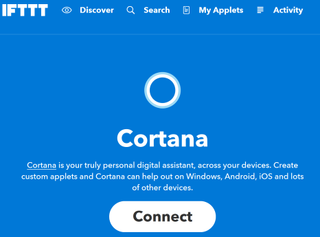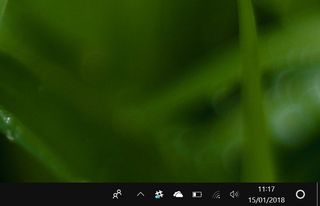Cortana is far from dead as Microsoft plans to make an 'Intelligent OS' with Windows 10
Despite the concern, Microsoft is not abandoning Cortana. In fact, the emerging AI front-end will only go deeper into Windows 10 starting with Windows Core OS.

With the Consumer Electronics Show (CES) wrapping recently many people have been worried about Microsoft's Cortana assistant. After all, Amazon's Alexa and Google's smart services dominated the show with plenty of new product announcements and – more importantly – large partnerships with home accessory makers (notably absent: Apple).
Despite that, however, Microsoft did have some big announcements including Synaptics and Qualcomm for reference boards and integration into home products. The Qualcomm announcement is significant because it lets manufacturers of smart home devices add Cortana without any work – it comes built into the reference board.
Additionally, Ecobee, Geeni, Honeywell Lyric, IFTTT, LIFX, TP-Link Kasa and Honeywell Total Connect Comfort are all on board too. Indeed, my Cortana already has Ecobee and IFTTT integration letting me control my thermostat through my Android phone or Harmon-Kardon Invoke speaker.
But the more significant news that was not announced is what's coming next for Windows 10 and Cortana.
Despite not having a smartphone to serve as a proper vector for Cortana Microsoft is repositioning the smart assistant for the PC. Looking towards Windows 10 Redstone 5 in fall 2018, and Redstone 6 in 2019 Microsoft is beginning to weave Cortana and artificial intelligence (A.I.) through the shell of Windows 10.

The goal is simple: make a "globally intelligent" OS.
The idea makes sense. Combine machine learning with A.I. and dig it deep into the operating system Cortana can be a very proactive assistant. Forget asking Cortana to play a song, but rather "Hey Cortana, can you read me the last email Zac Bowden sent me" actions and much more.
Get the Windows Central Newsletter
All the latest news, reviews, and guides for Windows and Xbox diehards.
And no, this is not "Clippy 2.0". This is more about hooking Cortana deeper into the native app experiences rather than a floating icon that nags you.
And despite people requesting Microsoft to just put Amazon Alexa into Windows 10 the task of making that happen – and working through Amazon – is much more work, with likely little in return. Alexa as an app on Windows 10 will not be better than Cortana as an app on iOS for similar reasons: lack of OS integration.

Some of these changes with Cortana are now just beginning. Cortana Collections is one aspect, but also Zac Bowden's recent article detailing Cortana moving to the Action Center is another. Another case is making Cortana more conversational via text since people tend to type more on a PC versus voice on a smartphone.
The future of Cortana will become evident later in 2018, but for now, Microsoft's plans involve building Windows 10 – and Windows Core OS specifically – around Cortana, not without it.

Daniel Rubino is the Editor-in-chief of Windows Central. He is also the head reviewer, podcast co-host, and analyst. He has been covering Microsoft since 2007, when this site was called WMExperts (and later Windows Phone Central). His interests include Windows, laptops, next-gen computing, and watches. He has been reviewing laptops since 2015 and is particularly fond of 2-in-1 convertibles, ARM processors, new form factors, and thin-and-light PCs. Before all this tech stuff, he worked on a Ph.D. in linguistics, watched people sleep (for medical purposes!), and ran the projectors at movie theaters because it was fun.
